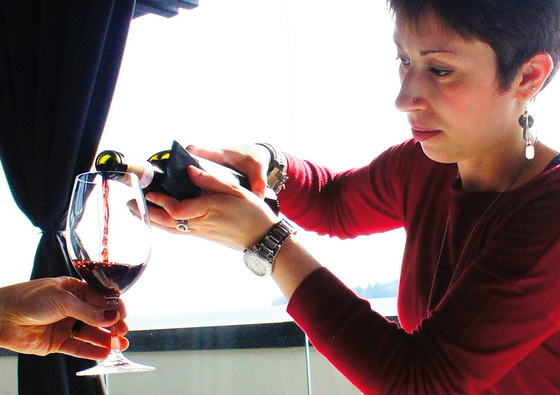There are thousands of wineries across the country, with California, Washington State, Oregon, Virginia and Texas leading the way. Not to mention the attraction of British Columbia just across the Canadian border. Wineries with tasting rooms open to the public.
The biggest producers don't need Mom & Pop stopping by in the Buick, but the little guys--Mom & Pop operations themselves--most certainly do. A winery with a 10,000-case production (which requires 20 to 50 acres of vineyards) can earn half its income in tasting room sales.
Not every tasting room visitor buys any wine, of course. In fact, the actual figure is more like 1 buyer out of every 15 visitors. An appallingly low number, when you consider all the variables: the customer has come to your place of business, the customer enjoys your product, the customer is slightly buzzed. On the plus side, the customer who does buy wine at the tasting room spends, on average, $125.
One in ten, more or less, also signs up for the "wine club," an arrangement that gets them a monthly or quarterly shipment of wine. And the average wine club member remains loyal for two to three years, spending as much as $1,000 a year (in the Napa Valley).
And the average winery tasting room in California, in Virginia, in New York, sees 2,000 visitors a month. (The Pacific Northwest, not so much.)
Still, there's a huge revenue source streaming through most wineries on most days. So you'd think, if you're trying to pencil this out, that owners would pay a vast amount of attention to this gold mine.
Half of all wineries offer no sales incentives to their tasting room employees. No commissions, no bonuses. No sales training, either. Wine knowledge? They provide "Wine 101" in-house.
Most wineries pay fast-food wages, and then complain they can't find workers. Wineries in Texas complain the loudest.
These insights aren't anecdotal; they're part of a Master's Thesis at the Burgundy Business School in Dijon, France, by Jennifer Blanck, who also holds a diploma from the Wine & Spirits Education Trust, and were published this week by Wine Business Monthly.
Is there any solution? Funny you should ask. The study was co-sponsored by Silicon Valley Bank, for example, which provides financing for a lot of smaller wineries and has a vested interest in their success.
Most important, says Blanck, is an annual assessment by management of tasting room employees' performance. And a more extensive orientation to the winery's culture.
NOTE: I was on the staff of Chateau Ste. Michelle for a couple of years, decades ago. Part of my job was to train tour guides. This post also appeared on Forbes.com.

Leave a comment